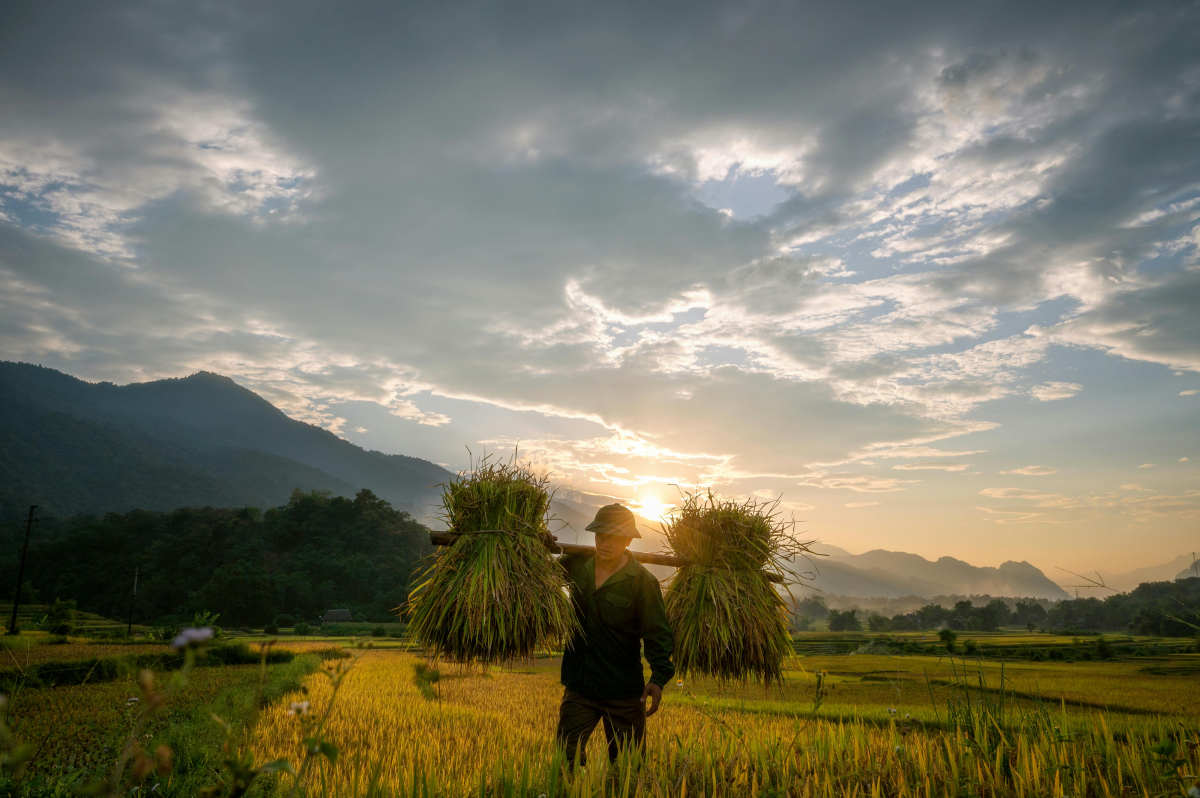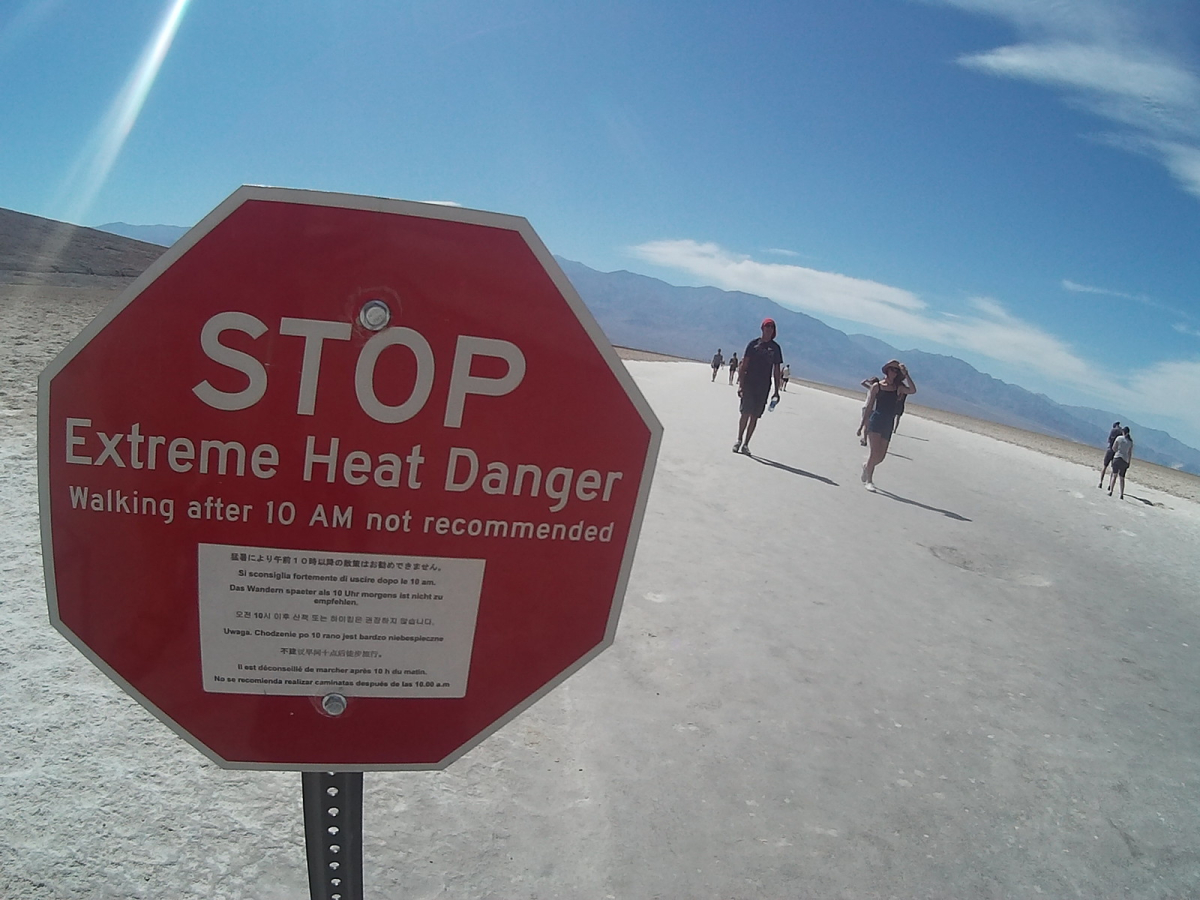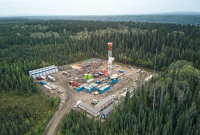Support strong Canadian climate journalism for 2025
This story was originally published by Vox and appears here as part of the Climate Desk collaboration
A 4-month-old died in Arizona as temperatures climbed into triple digits. A 2-year-old died in a hot car, also in Arizona. At least four people have died from heat-related illnesses in Oregon. One motorcyclist died and others were sickened riding through Death Valley as temperatures reached a record 128 degrees Fahrenheit.
These are some examples of the dangers of extreme heat just in the past week. As the climate grows hotter and extreme heat becomes our new normal, the summer will continue to bring reminders that high temperatures are a sinister threat.
And hot weather has already proven even more devastating in other countries. At least 30 people in Pakistan, more than 100 people in India, and more than 125 in Mexico have died due to heat waves this year. At the annual Hajj pilgrimage in Saudi Arabia, extremely hot weather played a role in the deaths of more than 1,300 people. According to the World Health Organization, heat stress is the leading cause of weather-related fatalities, and as global average temperatures rise, the risk is mounting.
It’s odd then that in so many aspects of our culture, we view severe heat as something that should be willingly embraced, bravely endured, blithely ignored, or in the case of some marginalized communities, entirely deserved.
Our books, movies, TV shows, common tropes, idioms, and social media often reinforce the idea that heat is something that — with enough mental acuity — we can overcome. But because of climate change, “pushing through” the heat is something we can no longer physically do. It’s just simply not possible in some parts of the world as temperatures rise past the point of practical survival.
We’ve already passed the point at which the millions of Americans who work outdoors in the summer, or who spend significant amounts of recreational time outside, can do so safely without regular access to shade and hydration — and increasingly even that isn’t enough. Yet ironically the more we rely on air conditioning and other human-made cooling systems for relief, the more we detach ourselves from the urgency of the issue.
It doesn’t help that heat itself, outside of an emergency like a wildfire, isn’t an immediate problem. It sneaks up on us, gradually inducing health problems over a number of hours, during which everything may seem fine — until it isn’t.
It’s worth examining our attitudes about heat: Where they come from, what kinds of built-in biases they might hold, and why it’s so hard to let go of the idea that failure to adapt to extreme heat is some kind of personal failing — even in a global heating crisis.
No one has to be miserably hot, and certainly no one has to die.
All our narratives about heat are about breaking through it. What if we can’t?
We don’t question the necessity of heating during the winter. Why, then, do we consider cooling during the summer a luxury? Even after the hottest year on record and likely the deadliest year for extreme heat, the policies needed to cope with hot weather are alarmingly weak in the US, if they exist at all. For instance, the Occupational Safety and Health Administration (OSHA), the federal agency in charge of workplace safety, is only this year beginning to put together federal workplace safety standards for extreme heat despite workers around the country regularly dying on the job due to high temperatures for years.
How did we get here? The delay in developing federal protections for workers exposed to the heat might be tied to the idea that if they couldn’t take it, it’s because they weren’t tough enough — a literal application of “if you can’t take the heat, stay out of the kitchen” and a deeply embedded cultural trope.
In fact, heat has been associated with physical and emotional endurance since the earliest modern novels — Don Quixote was very much toughing it out on his way to tilt at windmills. Narratively and thematically, heat typically represents hot tempers, madness and paranoia, and a growing tension and unease that often leads to aggression. It also co-exists with the concept of coolness — of “never letting them see you sweat.”
One character who did let us see him sweat did so in a movie that embodies the concept of calm under pressure — Paul Newman as Cool Hand Luke. The 1967 classic saw Newman nonchalantly dripping all over the celluloid while delivering an iconic performance as an unflappable prisoner serving a brutal term under grueling, sweltering conditions. Newman typified idealized masculinity that only grows stronger when put to the test — a test that in Cool Hand Luke includes enduring the heat.
The idea that oppressive heat is a phase that has to be borne until it passes — usually thanks to a climactic “break” in the weather like a rainstorm — exists in the narrative DNA of too many stories to count. Novels from One Hundred Years of Solitude to The Great Gatsby to Atonement use heat as a structural and thematic device to intensify emotion and conflict, push things to a breaking point, and then generate catharsis.
This theme gets reified in cultural tropes as well — most prominently, the idea that increased temperatures lead to aggression and mental unwellness. The quintessential example of this — Spike Lee’s 1989 classic Do the Right Thing, which was originally titled Heatwave — has at its narrative center a heat wave that slowly ratchets racial tensions throughout one Brooklyn neighborhood until they explode.
The notion that heat waves lead to violence typically gets mentioned in discussions and depictions of racial tensions, protests, riots, and other forms of civil and urban unrest, but reams of academic research also tie hot weather to increased car-honking, rioting, and domestic violence.
It’s important to stress, however, that correlation doesn’t equal causation. “It is not heat that triggers these incidences,” research scientist Adam Yeeles blogged in 2015. “There are economic, political, and cultural conflicts that bring people into the streets.” Yet it’s also true that extreme heat can seriously impact mental health and wellness, and all of this translates into the ongoing narrative that heat pushes people to physical, mental, and behavioral extremes — character tests to which they either succumb or overcome and push past.
This idea has unfortunately become a running theme in Hollywood. Erich von Stroheim’s silent film masterpiece Greed climaxes in Death Valley and was actually filmed in grueling temperature conditions reaching 120 degrees Fahrenheit in the Mojave Desert for months as cast and crew battled heat exhaustion. A third of the location crew had to be discharged and one lead actor was hospitalized after filming wrapped. The film’s brutal production was a precursor to the method mentality that often valorizes intense set conditions — think Fitzcarraldo or Mad Max: Fury Road and the recent Furiosa, which all saw actors undergoing physically and psychologically intense productions with the aim of enhancing the emotional intensity and verisimilitude of their performances.
These types of performances tend to become mythologized in pop culture, and they contribute to the illusion that real people, if we’re tough enough, can habitually survive prolonged exposure to the elements.
The reality, however, is that such intense prolonged exertion can be dangerous; witness the 2019 death of rising film star Godfrey Gao while participating in a grueling running-themed reality show. The risks associated with such activities are only growing. But public attitudes aren’t changing. Instead, they’re arguably growing more detached from the problem of climate change as the mercury climbs.
We’ve insulated ourselves from the reality of climate change
One of the problems with communicating heat risks is that they’re often obscure.
The average person lacks the context that helps us realize how dangerous things are actually getting. A graph can show us things like incremental temperature increases, for example. But it doesn’t convey urgency.
“The problem is that nobody really suffers from global warming, right? Global warming is an abstraction.” That’s historian On Barak, author of the forthcoming book Heat, a History: Lessons from the Middle East for a Warming Planet(publishing in August 2024).
“When you put these numbers on a graph and you connect them with a line, you see that the line tilts upwards,” Barak told Vox in an interview. “So this is global warming, but this doesn't tell us almost anything about heat and about how people experience heat. Heat is differential. Women suffer differently from men, the old differently from the young, the rich differently from the poor. So everything that’s political about our encounter with heat gets thrown out of the picture when we reduce our language to ‘global warming.’”
One of the paradoxes of modern life is that as we insulate ourselves from the heat and retreat indoors, we also numb ourselves to the problem.

Barak points out that tools like air conditioning and refrigeration are powerful for combating the heat, but they also exacerbate the climate crisis by heating the outdoors, combusting fossil fuels, and leaking heat-trapping gasses. Additionally, they’ve ushered in a cultural unlearning of other older methods for dealing with hot temperatures, such as architecture that promotes passive cooling, or reclaiming and encouraging sweat as a natural method of temperature regulation.
Not only that, but our bodies may actually be growing less able to adapt; he notes that when people are raised in air conditioned environments, their ability to sweat diminishes. “We have created a world, a physical environment and a body that is the product of this unlearning and this maladaptation.”
“We’re adapting, but we’re oblivious to the price that we and future generations are and will be paying for these adaptations.”
He further stresses that there’s a physical limit to how much humans can adapt, pointing out the wet bulb temperature as a significant metric, since it alerts us to the upper limits of the human body’s ability to regulate itself.
The wet-bulb globe temperature, or WBGT, measures multiple elements associated with heat at once. The US military developed this measurement in the 1950s after learning the hard way that no amount of fortitude can keep soldiers standing when weather conditions drive bodies beyond their physiological limits. It accounts for air currents, exposure to direct sunlight, as well as its namesake, “wet bulb,” which involves placing a wet cloth over a thermometer to get a reading of when sweating can no longer cool us down.
The frustrating thing about the wet-bulb temperature is that its thoroughness makes it complicated to describe.
This means it’s hard to convey to the public the importance of having a measurement like this, one that can help us prepare for increasingly extreme outdoor conditions. That, in turn, makes it more difficult to standardize and normalize checking the wet-bulb temperature as often as we check “the weather.” (The National Weather Service has a prototype tool that can estimate WBGT near you.) Despite increasing media attention given to the phenomenon, with little government promotion of the measurement and little public education on heat risks, most people either aren’t paying attention or don’t understand what the wet-bulb’s significance is when they do.
Of course, the wet-bulb temperature works to help people understand when they should avoid exposing themselves to the sun. But that idea presupposes that we have a choice.
What happens when you don’t have a choice?
Too many people are compelled to endure dangerous heat
Despite the increasing danger heat exposure poses, many people face immense pressure to endure dangerous temperatures, if they have a choice at all.
In the US, about one-third of workers have jobs that require them to be outside, like farm laborers, construction crews, and delivery drivers, putting them at risk of heat-related illnesses during heat waves. Indoor workers like those in kitchens, warehouses, and assembly lines can also experience extremely hot temperatures. Workplace cultures can push employees to ignore their own discomfort to continue working past their limits. And when paychecks are on the line, workers can and do die on the job. In sectors like construction, heat illnesses and deaths have become all too routine.
Last month, a construction worker in Rhode Island collapsed on scaffolding on a hot day. His coworkers tried dousing him in cold water but he died in a hospital less than an hour later. High temperatures can also cause fatigue, impair judgment, and increase reaction times, leading to more injuries. A 2021 study found that in California, high temperatures cause about 20,000 additional workplace injuries per year.
Regulators are trying to make some changes and stepping up enforcement of worker protections. The US Department of Labor last month fined a labor contractor more than $30,000 for failing to protect a Florida farm worker who died from heat stroke while harvesting oranges during a winter heat wave.
But only five states have workplace heat safety standards and the US federal government is still working on finalizing a national rule that may not take effect until 2026. Even the military has tougher and better-defined heat safety regulations than most workplaces.
While workers in theory have some choice in the jobs they take and momentum is building toward keeping them cool, the US also forces people to suffer dangerous levels of heat. At the end of 2022, the US incarcerated more than 1.2 million people, more than any other country in the world. America’s approach to penitentiaries hasn’t changed much since Cool Hand Luke: Many prisons today are cheaply designed, poorly maintained, and lack adequate ventilation. At least 44 states have prisons without air conditioning, including states like Texas that face some of the hottest temperatures in the country. According to the Texas Tribune, at least 41 people died in Texas prisons last year during heat waves. High temperatures likely played a role in the death of a prisoner in Illinois last month as well.
The heat doesn’t just afflict the prisoners; it also makes prisons a more dangerous work environment for corrections officers and other staffers.
Part of the challenge in improving conditions inside prisons and jails is the view that these facilities are supposed to be uncomfortable, and that people who are incarcerated somehow deserve to be hot.
“‘Prisons are supposed to suck’ — that’s a fundamental fallacy,” said John Fabricius, a legislative campaigner at Dream.org, a group advocating for prisoner rights and against mass incarceration. “Prisons are supposed to be about making the public safe. And if the prisons are actively executing policies that are decreasing public safety, then we have a problem.” In a blog post, Fabricius argued that severe heat exposure in prisons is forcing a reckoning between the stated goals of the criminal justice system and its actual implementation. Overheating prisons run contrary to the idea of these institutions as places for rehabilitation.
Janos Marton, chief advocacy officer at Dream.org working on criminal justice, explained that there is also a constitutional requirement to protect incarcerated people under the Eighth Amendment’s prohibition of cruel and unusual punishment and when someone is in custody, the government must preserve their welfare and avoid suffering. Unbearably hot jail cells don’t just harm the people inside them but undermine society as a whole.
“Ninety-five percent of people who are sentenced to prisons are meant to come home,” Marton said. “So if you're sentenced to three years on some sort of low-level felony and then you die in prison from this overheating crisis, then that’s the state’s complete failure to live up to their obligation.”
Some also argue people in jails and prisons don’t need cooling because plenty of people outside of prison sweat it out without the benefit of fans or air conditioning. But in a 2017 ruling requiring a Texas prison to lower temperatures in a notoriously hot prison unit, US District Judge Keith Ellison said he found this logic unpersuasive.
Ellison wrote that “there will be many among the public who will recount stories of having survived abodes in hot climates without the benefit of modern technology” but noted that “treatment of prisoners must necessarily evolve as society evolves.”
Poverty also leaves people little choice in dealing with hot weather. About half of the people who die during heat waves in a given year don’t have permanent housing. More than 650,000 people experience homelessness on a given night, with about 40 percent of them forced to stay in places not intended for habitation like cars or parks. With the recent Supreme Court ruling in the Grants Pass v. Johnson case, houseless people have even fewer rights to public spaces while cities can enact more punitive measures against them.
And with electricity rates rising, people on a tight budget may choose to go without air conditioning during some of the hottest months. Most states don’t have any rules that prevent a utility from cutting off power during a heat wave, so an unpaid bill could leave someone without the means to cool down when they need it most. Here again, the lack of resources we provide to this population to deal with the heat suggests a cultural victim-blaming — if they get too hot, it’s their own problem and if they can’t afford the “luxury” of cooling, too bad.
The way we talk about climate change needs to become more immediate
When we talk about advancing heat, small decisions can have ripple effects. Take a tiny but common tendency on the part of media outlets: To illustrate stories about heat waves and other climate crisis effects with photos of people relaxing at a beach or playing under a fountain — photos associated with leisure and relaxation rather than risk and caution.
“Not everybody has access to a pool, to an air conditioner, or even to a water hose,” Barak points out. “If your presentation of the heat wave is people at the pool or people who can take a break from work and go to the beach ... you need to have the leisure, you need to have the career, the livelihood that allows you to cool off.”
Barak argues that far from being trivial, changing the way we think and talk about climate crisis “begins with these representations, visual and also lexical.” He argues that because our awareness of the climate crisis has been driven primarily by scientists, we’ve derived language from scientists, who tend to speak in terms of “humanity” as a species. Thus, we talk about climate change as a problem created by humanity.
The problem? The solution to the climate crisis is inherently political, but “humanity is not a political category,” Barak said. “Capitalists are more responsible than their employees, than the proletariat is for the climate crisis. The global north is more responsible than the global south. Men are more responsible than women. Different religions are more responsible than others.”
“If we do not allocate responsibility and blame and demand climate justice, then we remain in a nonpolitical language,” he said. He suggests, for example, naming heat waves the way we name hurricanes, in order to communicate their urgency — but proposes naming them after specific people whose business and political decisions have contributed directly to worsening the climate crisis. “Naming names,” he says, can be a huge step forward in creating political change.
Simultaneously, however, he stresses the need to internalize responsibility for change. He argues that we tend to think of the climate crisis “as something that comes from outside, as something that comes from out of space. And this is exactly the opposite of how we should really think of the problem — in which we are the meteorite, we are the aliens, we are the problem.”






Comments
As I have gotten older, heat is an enemy to me. I just run hot all the time which is nice for our winters bur above 30 I melt.
And factually how many Canadians freeze to death vs swelter to death. I think the stats will show at least 20 to 1 of heat vs cold. And this is just a glimpse of where we are heading. Think of summers is a few decades with temperatures always above 30 degrees.
Sure glad I won't be around. Yesterday I Dubai the temp was equivalent to 62 degrees C. Residents and visitors advised the heat was life threatening and yet half our Canadian Premiers just want us to produce more and more fossil fuels, and no folks this is not part of a cycle.